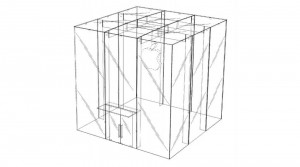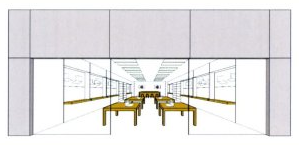In November 2010 Apple Inc obtained a three-dimensional trade mark of the layout of their ‘flagship’ stores in the United States as depicted below. Since then Apple has sought to extend this trade mark protection internationally under the Madrid Agreement. The extension was accepted in some jurisdiction but not in others.
 |
 |
Apple’s world domination
In 2013, the German Patent and Trademark Office refused Apple’s application ruling that the proposed trade mark:
- was simply the ‘essential elements’ of Apple’s business; and
- had not established its ‘commercial origin’.
On appeal the Court of Justice of the European Union (CJEU)1 focused on whether the layout design of Apple stores constituted a sign that was capable of being graphically represented and whether it was capable of distinguishing the goods and services of Apple from other providers. In July 2014, the Court found that:
1. the layout and floor plans of the store resemble signs that were ‘distinct’ and formed a visual representation of Apple without the need to revert to packaging of the goods; and
2. there was no way to rule out the effect the stores’ layout had in distinguishing Apple’s goods and services to that of its competitors, as it was in marked contrast to other store layouts.
The CJEU confirmed that the design and layout of Apple’s stores could be registered as a three-dimensional trade mark.
The case now goes back to the German Patent Court for a decision. The German Court will have to take into account issues such as inherent distinctiveness of Apple’s signature store layout, when reaching its decision.
Much more than a logo
When brand represents a significant part of a company’s valuation (Apple’s brand was recently valued at US$98.3b2) companies in the retail industry will go to increasing lengths to protect their brands and gain a competitive edge. Apple’s success in trade marking its signature store layout demonstrates the expanding scope of trade mark protection available to retailers. Whilst the German Patent Court’s decision awaits, Apple are certainly paving the way for all brand conscious retailers to protect the design and layout of their flagship stores.
1Case C-421/13, Apple Inc. v Deutsches Patent und Marketnamt, 10 July 2014 (CJEU)
2Interbrand Best Global Brands 2013 Report
Image sources: Rob DiCaterino NJ, USA; United States Patent and Trademark Office; InfoCuria – Case law of the Court of Justice
Related posts
Star jump or high jump
Intellectual property – a brief guide
Intellectual Property
Retail
Posted on: 10 September 2014

 HOME
HOME
